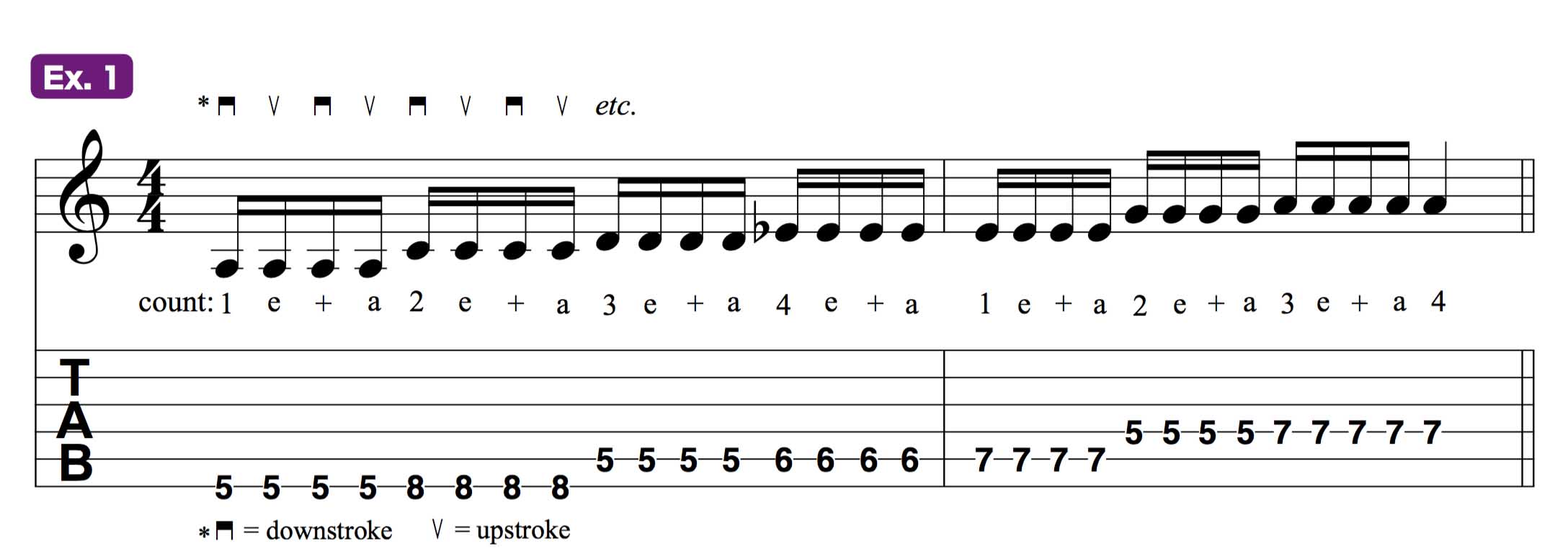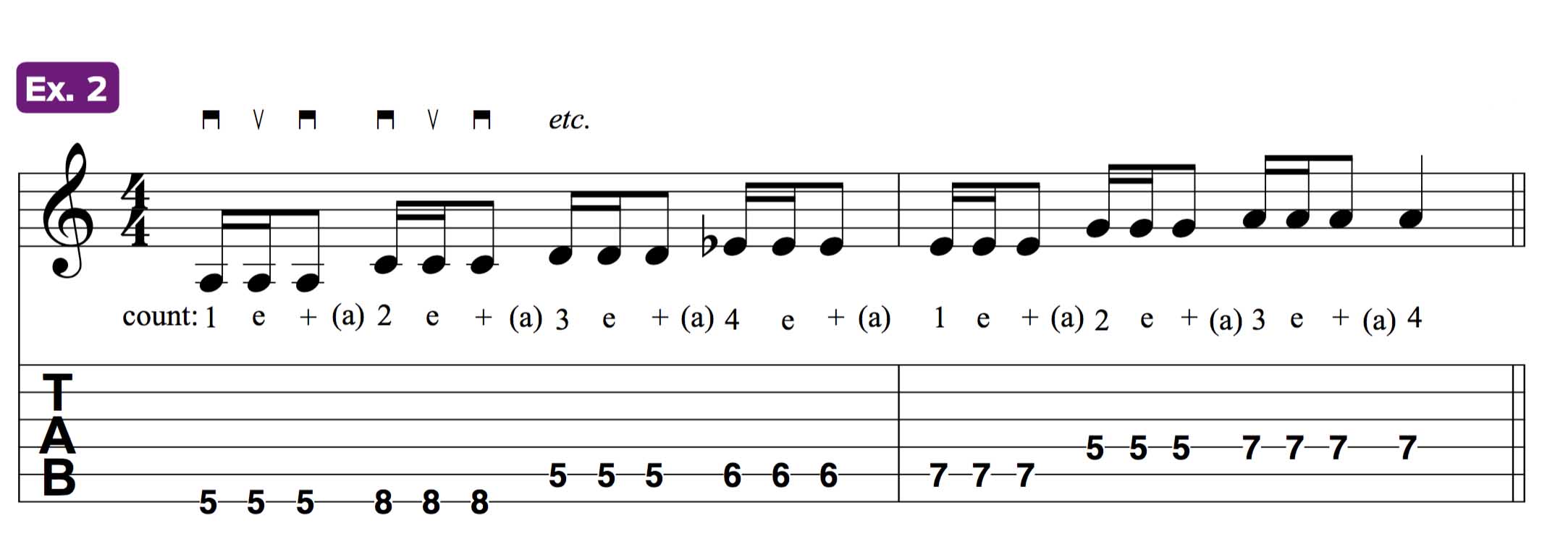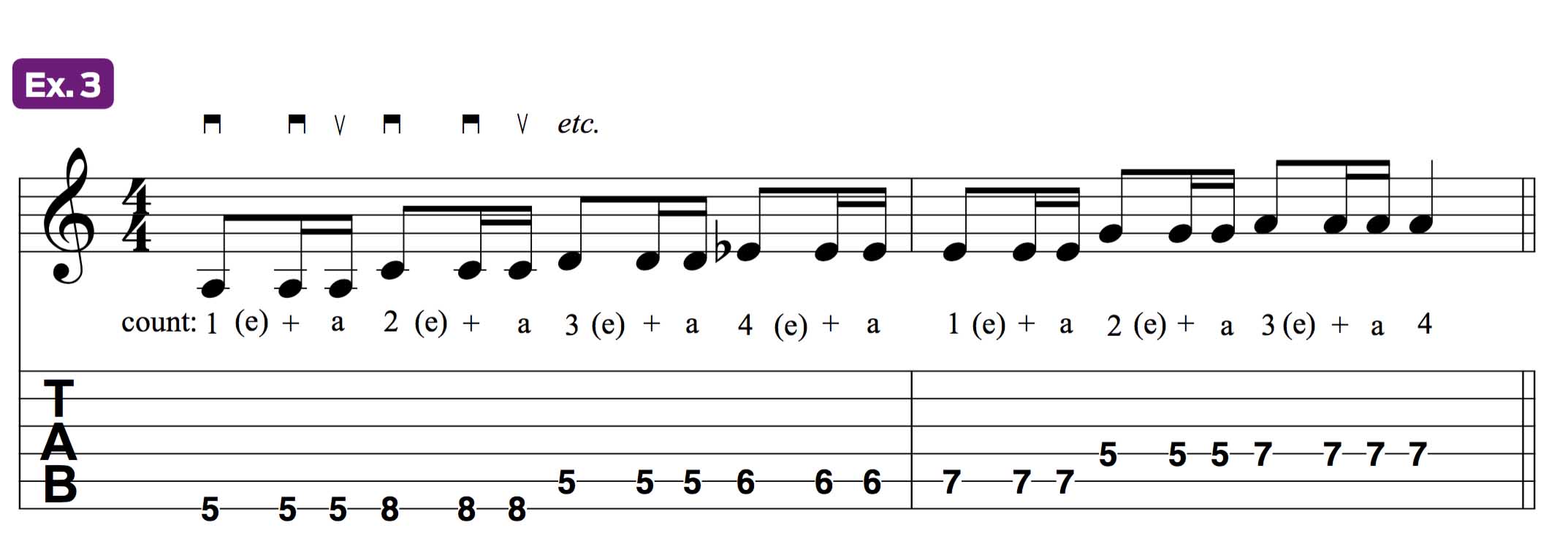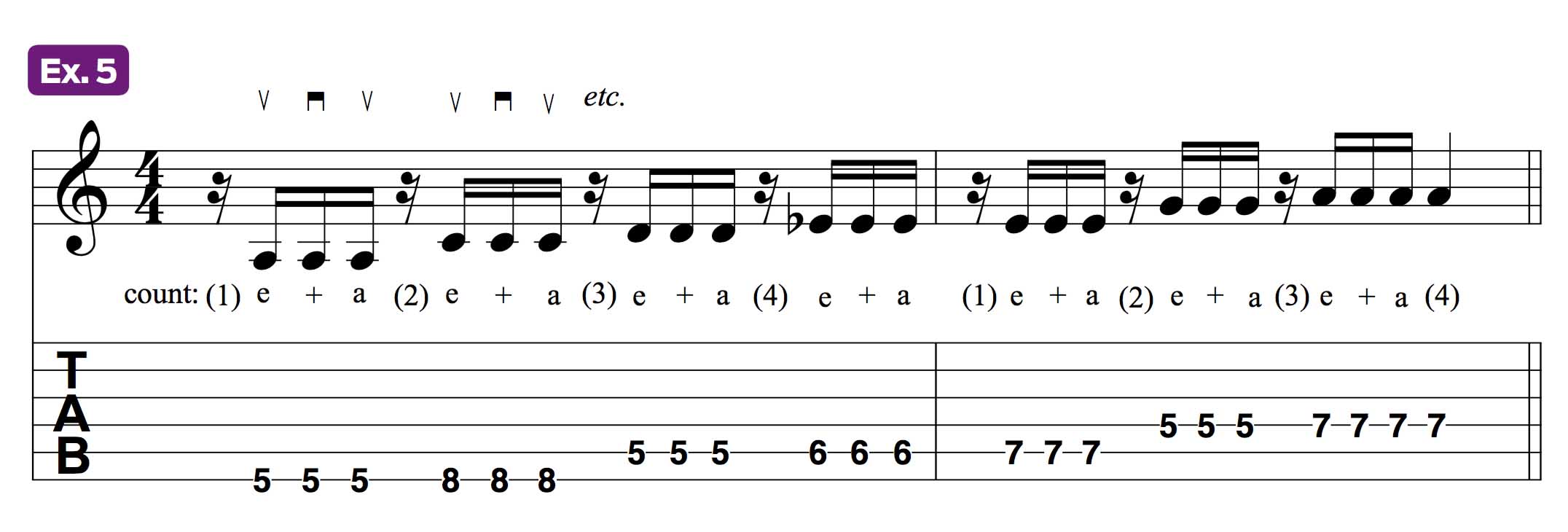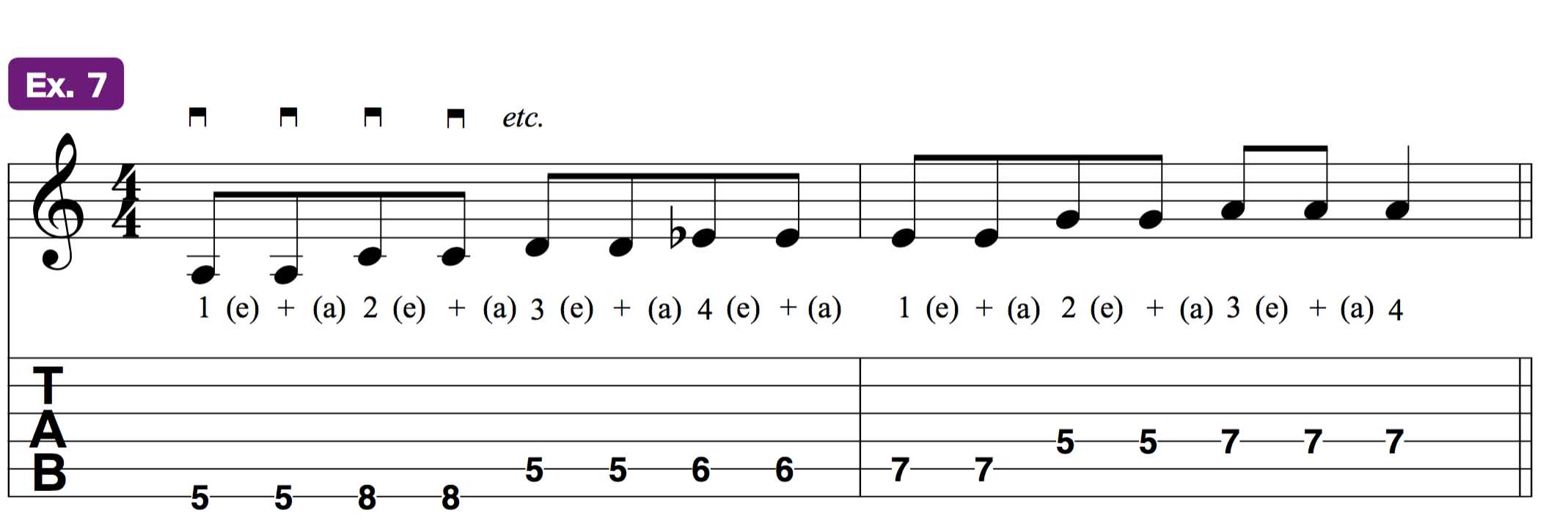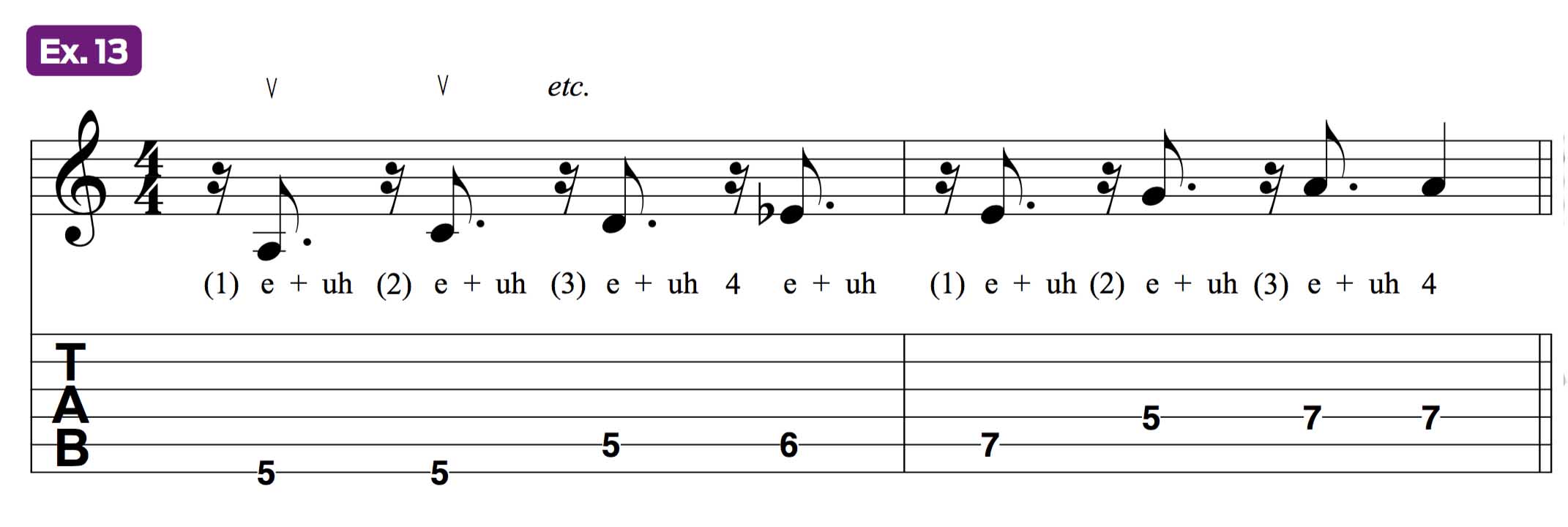Subdivide and Conquer: A Methodical Approach to Mastering 16th-Note Rhythms
Dig out the metronome, folks, it's time to work on your rhythm game.

I'll confess, the greatest thing to ever happen in my career as a guitarist took place not in a practice room or classroom, or on a bandstand. It happened on the football field.
I wanted to join my high school jazz band, but in order to do that, I also needed to be in the concert and marching bands, and since there was no room for an electric guitarist in either of those ensembles, I was ingloriously assigned to the bass drum.
Thankfully, during my first band camp, a well-known drummer and music educator named Tommy Igoe must have sensed that I had a pretty decent sense of rhythm and reassigned me to the snare drum. I didn’t realize it at the time, but learning to read the intricate 16th-note rhythms of a marching percussion ensemble would become the bedrock of my music education.
Rhythm went from being a nebulous concept to a concrete, understandable formula. This super-charged not only my guitar playing but also my overall sight-reading and transcribing skills
Rhythm went from being a nebulous concept to a concrete, understandable formula. This super-charged not only my guitar playing but also my overall sight-reading and transcribing skills, as well as my concept of how songs and arrangements are put together and, most importantly, how grooves are built.
As you may know, 16th notes are used extensively in many modern musical styles, especially funk, prog-rock, and metal, as well as pop. I often find my guitar students struggling with rhythms, especially tricky 16th-note subdivisions, which is the subject of this lesson that I’ll shed some light on.
Over time, as a teacher, I’ve developed a methodical approach that breaks down rhythm, one beat at a time, into a finite number of possible combinations, or permutations. Once you’ve mastered these one-beat stems, it’s simply a matter of stringing them together to form longer and more complex rhythmic patterns.
Once you’ve mastered these one-beat stems, it’s simply a matter of stringing them together to form longer and more complex rhythmic patterns
In 4/4 meter, which serves as the rhythmic template and framework for the vast majority of songs, there are four quarter-note beats per measure, or bar, of music, which serve as the pulse and basic counting unit – “1, 2, 3, 4, 1, 2, 3, 4,” etc. Each beat may be subdivided into four evenly spaced notes, which are called 16th notes because there are 16 of them per bar – 4 x 4 = 16.
All the latest guitar news, interviews, lessons, reviews, deals and more, direct to your inbox!
Simple arithmetic. And so a bar of 4/4 presents the possibility to play on any or all of the four 16th notes within each beat. As a whole, the four groups of 16th notes are counted “1 ee and uh, 2 ee and uh, 3 ee and uh, 4 ee and uh,” and the counting sequence repeats with each new bar.
To save space in the notation for the examples that will be presented, I’ve used the short-hand symbols 1 e + a, 2 e + a, etc. Let’s begin by looking at a straightforward, illustrative musical example, wherein all four 16th notes on each beat are articulated using alternate (down-up-down-up) picking (see Example 1).
As you’ll hear, I’ve used the familiar-sounding A blues scale (A, C, D, Eb, E, G) ascending through one octave to demonstrate the groups of 16th notes, with each different scale tone played four times, as four consecutive 16th notes.
In Examples 2–5, we go through every combination that has us playing on three of the four 16th notes: 1 e + (a), 1 (e) + a, 1 e (+) a, and (1) e + a. (The parentheses indicate the silent, unplayed 16th-note counts.) Pay close attention to the picking pattern: Downstrokes happen on the downbeats (the numbers) and on the “and” counts (“+”), and upstrokes fall on the “e” and the “a.”
To help keep steady time and a good feel with the picking hand, you’ll find it advantageous, if not essential, to perform a silent “ghost” upstroke or downstroke motion for the missing notes.
Essentially, the hand stays in perpetual motion with an unbroken down-up-down-up oscillation, regardless of whether or not you’re picking every 16th note.
Also practice each example with a metronome, starting out slowly at first and increasing the tempo only when you can play everything cleanly.
Once you’ve mastered this initial batch of exercises, it’s time to tackle Examples 6–11, which present the six possible permutations of two 16th notes per beat.
Paradoxically, the more 16th notes we remove, the more challenging it may become to correctly articulate the notes that remain, as we have to account for the spaces between them.
The last set of stems, in which we play only one note per beat, may be the hardest to execute of them all, with the first stem being the obviously easy exception.
Play through Examples 12–15 and see if you agree. As with the previous examples, each note is held for the remainder of the beat.
Another option would be to play each note staccato (short and detached from the note that follows), adding a rest after each articulation.
Now that we’re acquainted with the 15 stem rhythms in the previous examples, we’re ready for the big payoff. By simply assembling different combinations of these one-beat cells, we can systematically tackle and master all longer 16th-note-based rhythmic motifs.
Example 16 pairs Examples 3 and 4 to create a riff with a rhythmic structure that recalls that heard in “Immigrant Song” by Led Zeppelin.
Example 17 borrows the eighth-note rhythmic phrasing of “Day Tripper” by the Beatles but recasts it with different notes and a half-time 16th-note feel across one bar.
Notice how each beat uses a different stem rhythm and that the entire riff is a combination of the stems from Examples 8, 1, 11, and 5, played in succession.
The original riff in Example 18 is based on the formula of using four, three, two, and then one articulation per beat in the first bar, then a retrograde sequence of one, two, three, and four subdivisions in the second measure (the stems from Examples 1, 5, 9, 14, 12, 6, 3, and 1 again, played in succession).
Our final drill (Example 19) is a four-bar exercise that includes every one of the 15 stems for 16th-note subdivisions presented thus far.
Musically, it may be compositionally chaotic, not to mention monotonous, with just the open D note repeated (it is, after all, just an exercise), but it should challenge your rhythm-reading and -counting skills. When you see a rest, silence the string by lightly laying your fretting fingers on it until the next note is picked.
Reading and correctly articulating 16th-note rhythms is challenging, but by taking each subdivision one beat at a time, as we’ve done here, you’ll be able to skillfully conquer them, which will make you a better and more competent musician.
For further study, if you’d like to take a similar and even more expansive and methodical approach to improving your sight-reading skills, I highly recommend the book Melodic Rhythms for Guitar by William Leavitt.
